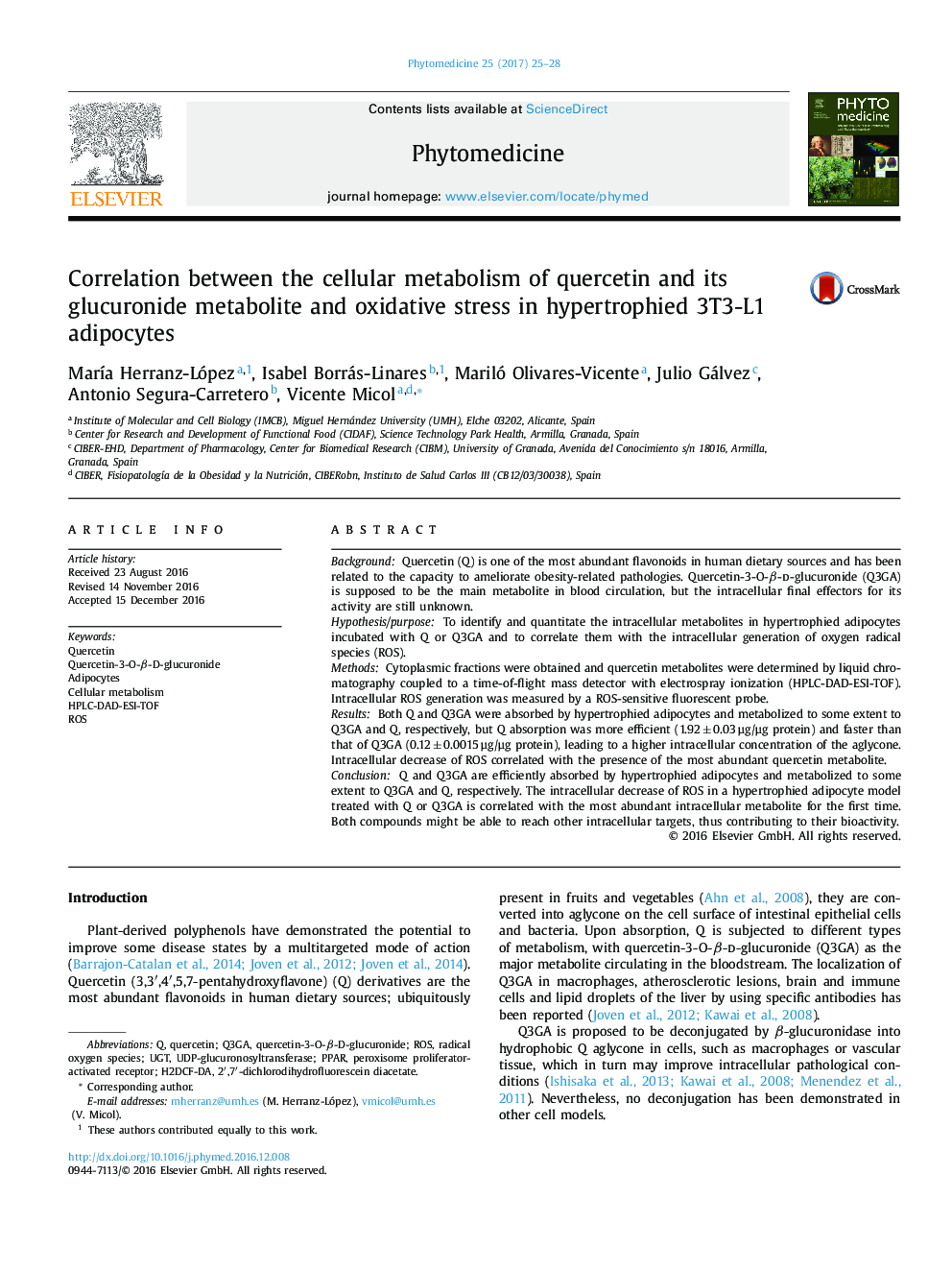| Article ID | Journal | Published Year | Pages | File Type |
|---|---|---|---|---|
| 5549436 | Phytomedicine | 2017 | 4 Pages |
BackgroundQuercetin (Q) is one of the most abundant flavonoids in human dietary sources and has been related to the capacity to ameliorate obesity-related pathologies. Quercetin-3-O-β-d-glucuronide (Q3GA) is supposed to be the main metabolite in blood circulation, but the intracellular final effectors for its activity are still unknown.Hypothesis/purposeTo identify and quantitate the intracellular metabolites in hypertrophied adipocytes incubated with Q or Q3GA and to correlate them with the intracellular generation of oxygen radical species (ROS).MethodsCytoplasmic fractions were obtained and quercetin metabolites were determined by liquid chromatography coupled to a time-of-flight mass detector with electrospray ionization (HPLC-DAD-ESI-TOF). Intracellular ROS generation was measured by a ROS-sensitive fluorescent probe.ResultsBoth Q and Q3GA were absorbed by hypertrophied adipocytes and metabolized to some extent to Q3GA and Q, respectively, but Q absorption was more efficient (1.92â±â0.03 µg/µg protein) and faster than that of Q3GA (0.12â±â0.0015 µg/µg protein), leading to a higher intracellular concentration of the aglycone. Intracellular decrease of ROS correlated with the presence of the most abundant quercetin metabolite.ConclusionQ and Q3GA are efficiently absorbed by hypertrophied adipocytes and metabolized to some extent to Q3GA and Q, respectively. The intracellular decrease of ROS in a hypertrophied adipocyte model treated with Q or Q3GA is correlated with the most abundant intracellular metabolite for the first time. Both compounds might be able to reach other intracellular targets, thus contributing to their bioactivity.
Graphical abstractDownload high-res image (137KB)Download full-size image
